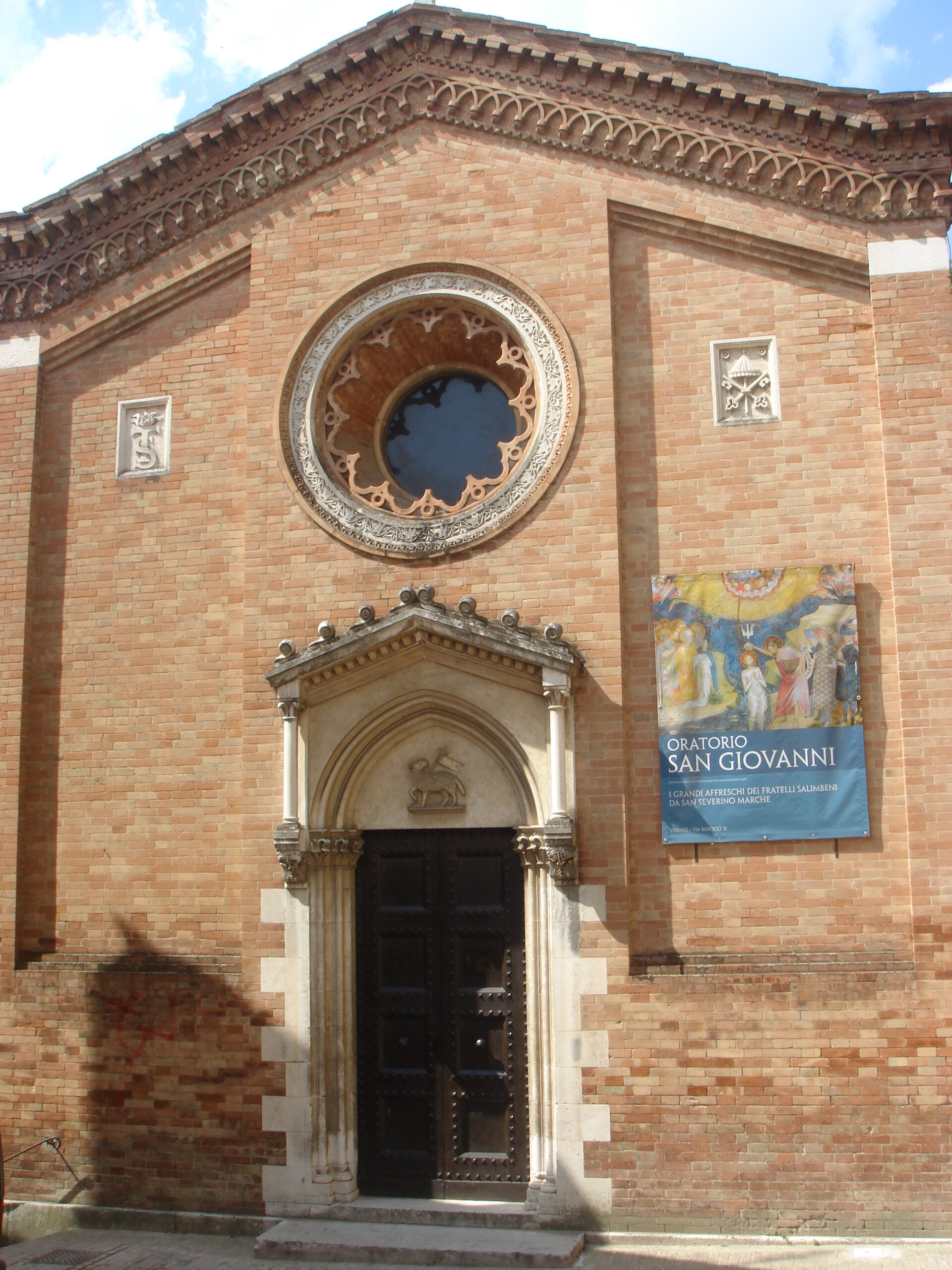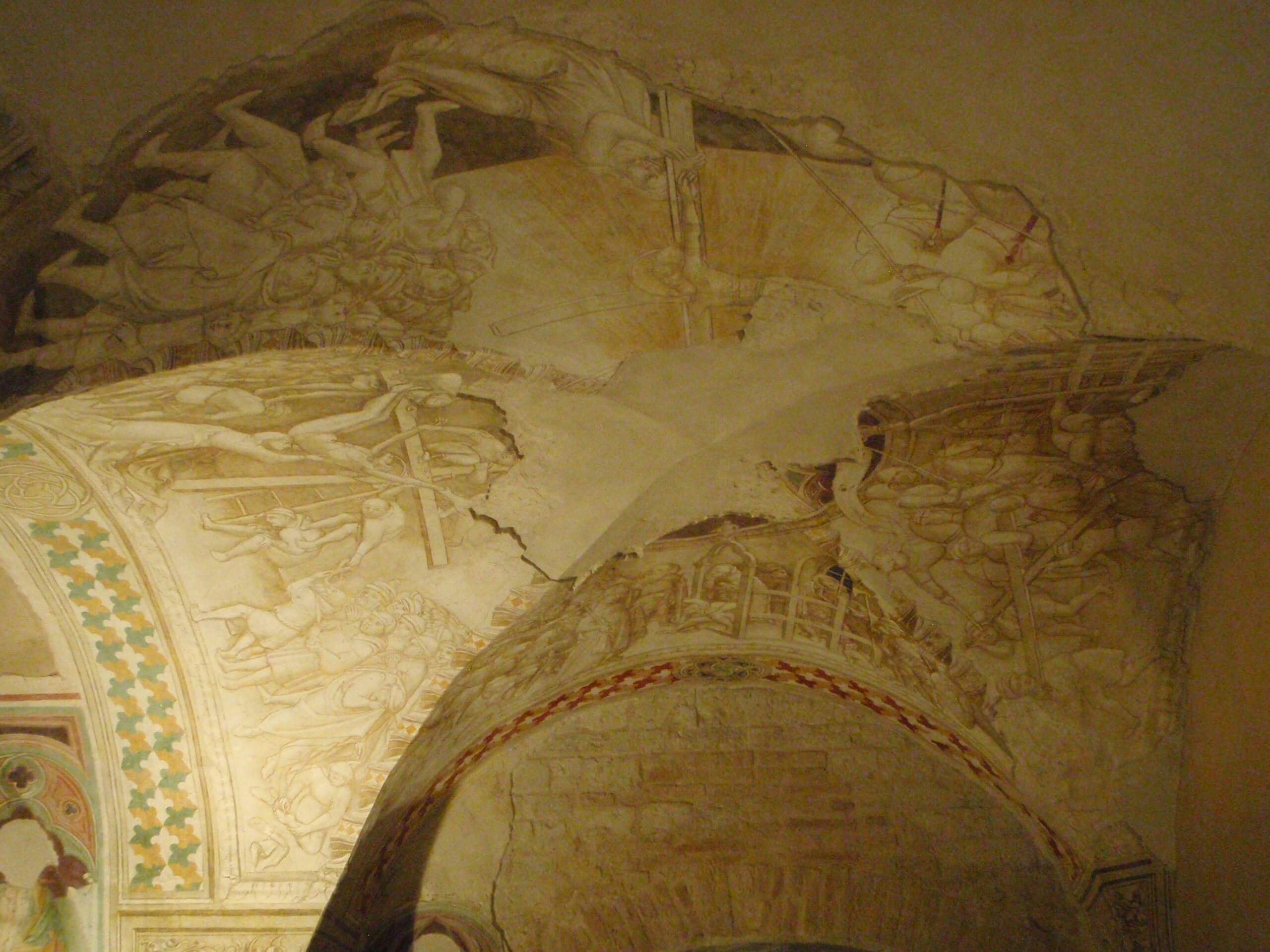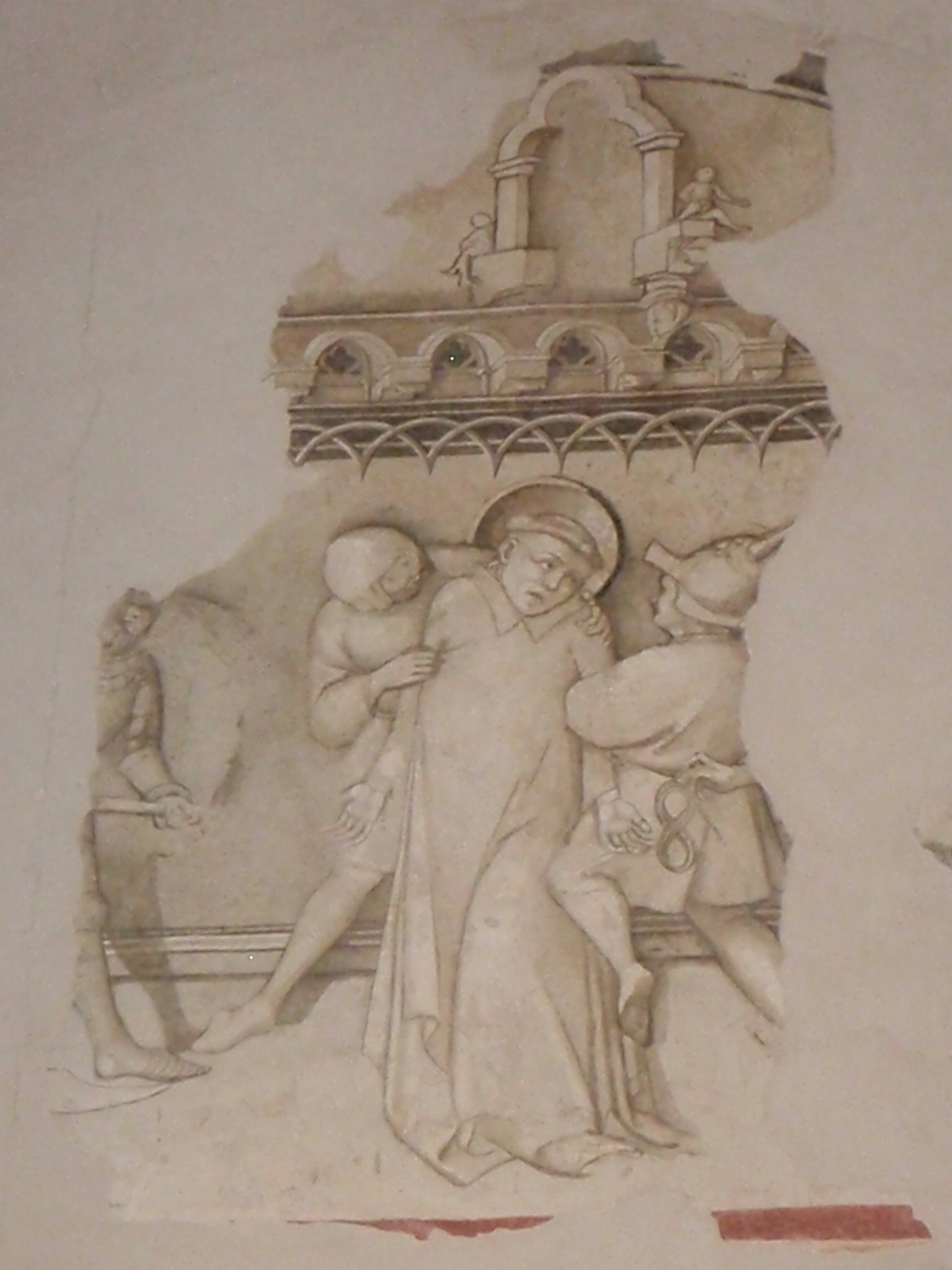Lorenzo Salimbeni died before October 8th, 1420. Born in San Severino Marche in 1374, Lorenzo spent his career working alongside his brother Jacopo. The pair are best known for their 1416 fresco cycle in the Oratory of Saint John the Baptist in Urbino.
Their other signed works were executed in San Severino Marche where Iacopo served as a Councillor of the Commune (documented on January 27, 1427). In addition to a triptych that Lorenzo executed for San Lorenzo in Doliolo, the pair also decorated the crypt with a cycle of paintings illustrating the lives of San Lorenzo and Sant’Andrea. Throughout the cycles, text and image is combined. Unlike the colorful and lively paintings filling the walls of the Oratory, these are painted in grisaille. The monochromatic vault decoration contrasts with the color-rich portraits of standing saints on the piers. In his analysis of this cycle, P. Scarpellini notes the “expressive and dramatic realism” and further connects the forms to miniature painting in Bologna. Much of the Salembeni brother’s work seems to draw from myriad visual traditions showing a concern with Trecento visual effects, an interest in the Late Gothic, as well as a familiarity with “transalpine motifs.”
Their ability to synthesize a number of sources is particularly evident in the Crucifixion scene filling the altar wall of the Oratory in Urbino. There the brothers borrowed elements of the composition, including the joust and armed figures, from Pietro Lorenzetti’s fresco in the Lower Church in Assisi. However, just as they did in the San Severino Marche cycle, the brothers created humanized accounts. On the adjacent wall, Lorenzo and Jacopo turn to a detailed accounting of the Life of Saint John the Baptist that betrays their attention to their contemporaries and to the natural world. In several places, the viewer’s eye is drawn to the built up areas of the plaster as and where objects were embedded to enhance the reflective surface.
Reference: P. Scarpellini. “Lorenzo Salimbeni.” Grove Art Online. Oxford Art Online. Oxford University Press.
Exterior of the Oratory of Saint John the Baptist, Urbino (Italy) (c.1416)
Lorenzo & Jacopo Salembeni. The Crucifixion & Scenes from the Live of Saint John the Baptist. (1416). Oratory of San Giovanni Battista, Urbino, Italy.
View of San Severino Marche (Italy).
View of Nave. San Lorenzo in Doliolo. San Severino Marche (Italy)
Vault frescoes & details from scenes from the Lives of San Lorenzo and Sant’Andrea, (before 1420). San Lorenzo in Doliolo. San Severino Marche (Italy)
Photo credit: Jennifer D. Webb
Further reading: Osborne, June. Urbino: The Story of a Renaissance City. Chicago (2003). Minardo, Mauro. Lorenzo e Jacopo Salimbeni. Florence (2008).










